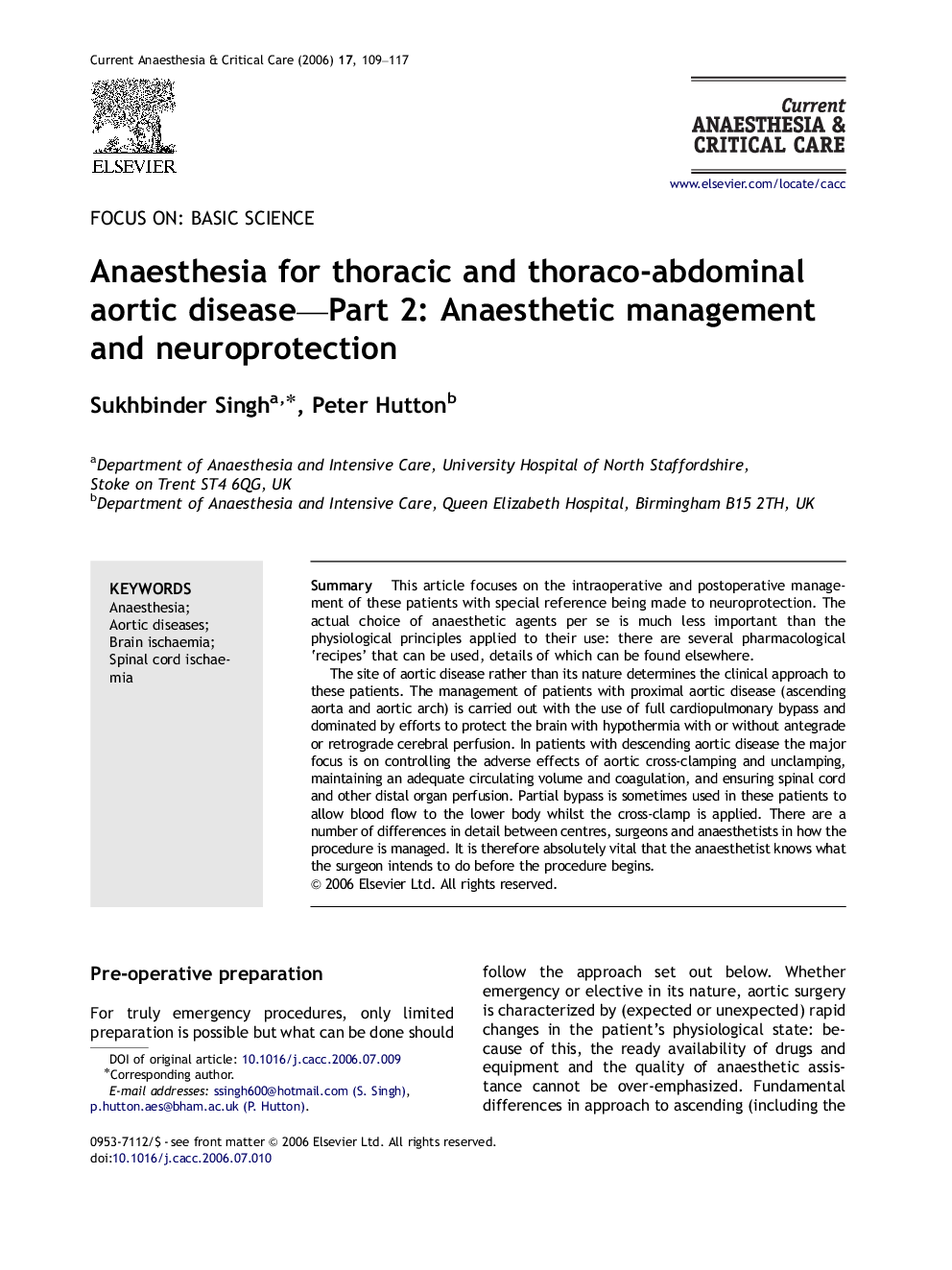| Article ID | Journal | Published Year | Pages | File Type |
|---|---|---|---|---|
| 2607768 | Current Anaesthesia & Critical Care | 2006 | 9 Pages |
Abstract
The site of aortic disease rather than its nature determines the clinical approach to these patients. The management of patients with proximal aortic disease (ascending aorta and aortic arch) is carried out with the use of full cardiopulmonary bypass and dominated by efforts to protect the brain with hypothermia with or without antegrade or retrograde cerebral perfusion. In patients with descending aortic disease the major focus is on controlling the adverse effects of aortic cross-clamping and unclamping, maintaining an adequate circulating volume and coagulation, and ensuring spinal cord and other distal organ perfusion. Partial bypass is sometimes used in these patients to allow blood flow to the lower body whilst the cross-clamp is applied. There are a number of differences in detail between centres, surgeons and anaesthetists in how the procedure is managed. It is therefore absolutely vital that the anaesthetist knows what the surgeon intends to do before the procedure begins.
Related Topics
Health Sciences
Medicine and Dentistry
Anesthesiology and Pain Medicine
Authors
Sukhbinder Singh, Peter Hutton,
